#also do you have any idea how hard it is to find screenshots of nathan 'wears a three piece suit to a crime scene' wuornos with his sleeves
Text




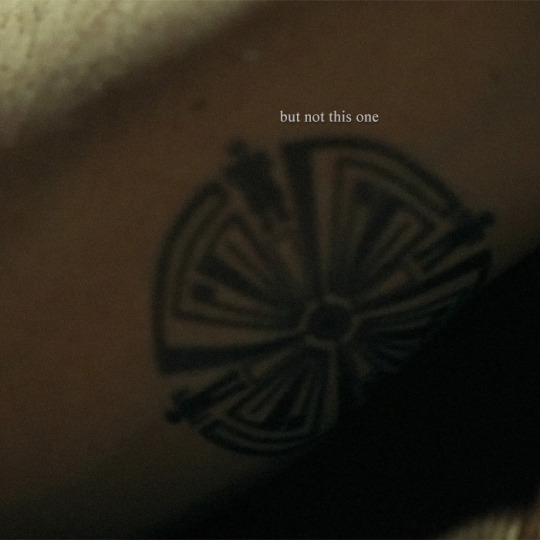
- The Mountain Goats
#haven#haven syfy#havenedit#mine:photoset#phoned it in a bit on this one but i had to get it out of my head#also do you have any idea how hard it is to find screenshots of nathan 'wears a three piece suit to a crime scene' wuornos with his sleeves#rolled up
9 notes
·
View notes
Text

A post for publicly sharing the products of my Drawfee Lalafell idol project!
(if u don't know what the fuck I'm saying just scroll on)
NOTE: I am not affliated with Drawfee I just stole their logo for that edit. I'm not making money Julia pls don't sue me
FAQ
Q: Why do this?
A: Fatal case of brainworms
Q: How long did you spend on making these?
A: Too long. Enough questions
Jokes aside, here's a proper intro to what this is for people who aren't in that one very specific discord:
As a creative project of sorts, I decided to make 4 Lalafells in FFXIV based on the Drawfee crew (youtubers). SPECIFICALLY these are based on their Newsday Comic Designs, because there's only so much staring at real people's faces really zoomed in I can do before I start feeling like a creep.
So, No, these are not "lifelike" or even "as close to life like as i can make potato people in a 10 year old video game". They're based on stylized ideas of people, warped by my creative liberty. That left me more space to make them cute instead of uncanny valley, which I'm sure any drawfee members that see this post might appreciate too.
They're also all heavily modded. It's more fun for dressup.
With that said! Onwards to the pictures (and design notes)!
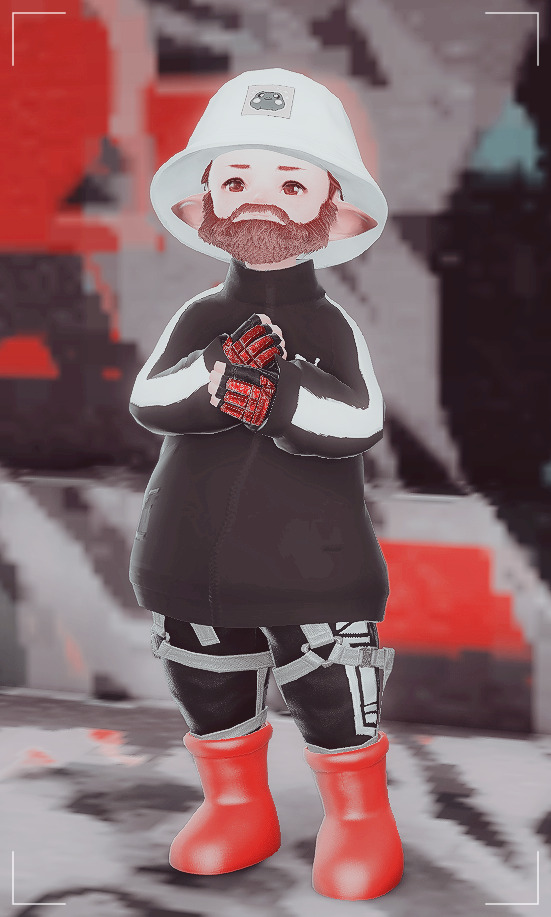

Nathan:
I actually "made" the beard for this myself - or, rather, I refitted it from a modded beard for Roegadyn. I even made an effort to mold it into a rough flower shape, but I'm afraid it doesn't show up that well. Still, remembering that there is no full beard for Lalafell in the vanilla game, I think it actually looks quite cute!
For this "casual" fit I made an effort not to make Nathan look too fashion-y. Of course, they're idol photoshoot style pics, so I still had to dress him up a bit! With this sporty fit with the fun big red boots reminiscent of early video game character designs, I think I landed in a pretty nice middle ground.
Julia:
This is the only design I paid real life money to make. I spent forever futzing with free hair mods trying to find one I liked, but in the end I forked over a few bucks to an experienced hair modder's online shop and got this hair that comes with all the features I wanted. Can't say I regret the purchase, it's very pretty.
For the outfit, I knew what I wanted pretty much immediately. I have had this outfit mod for a long time, but I've never really known what to use it for. It feels very Julia, even if I can't remember necessarily seeing her wear this kind of thing before. Maybe it just feels French, and I associate Julia with France?


Karina:
Karina's face sculpt mod was very easy to decide. Looking at the list of the free female Lala faces, I saw one that looked like a little shit - and named "Give Me the Phone" - and immediately knew it was perfect. I had to edit this hair to become hat compatible for later outfits, but overall this one was full of easy picks.
Maybe I'm projecting too hard, though? I even dressed her in a top I modded for myself, after all.
Jacob:
Jacob's design is one I agonized over, because finding a hair for him was quite hard. Short hair mods are rarer than long ones, and Newsday Jacob's hair is very distinctive. In the end I had to settle for a more realistic style, but I'm told it still reads as him.
I wound up putting Jacob in maybe the cutesy-est outfit of the four. I don't think he'd mind, but either way the funny little overalls were too big a temptation for me to resist. Accessorising with bandages is where my weeb roots really shine through, though.
Portraits done, here's the additional materials I've made!

Drawfee Kindergarten Field trip! Fun fact, I took this screenshot mere seconds before the dungeon I used as a set kicked me out, which means I spent the entire instance timer just deciding on accessories and posing! Where are they going? To see the big squid at the Aetherfont's center, of course!
youtube
The first music video! Motions not by me, I'm not that talented, these are retargeted Project Sekai dances (retargeting also not by me lmao animation modding scares me)
youtube
Childish war is such a fun song and dance, never mind the fact that none of the "personalities" really work for drawfee. It's dancing lalas! Who cares!
That's it! I might do more music videos or photo shoots in the future, but that's highly dependent on my brain chemistry, so truly nothing is certain. If you made it this far, I hope my silly little project brought you some joy! (and olive) And hey!
Check this out!

12 notes
·
View notes
Text
Where does Bendy in Nightmare Run fit into the Bendy Universe?
Let me ask you this: does anyone else find it odd that we don’t see any of the content from Bendy in Nightmare Run within the Crack-Up Comics? Like the game has four great bosses, three standard enemies, and a bunch of costumes, and not ONCE do they make another appearance (save for one Easter egg of Chester in BATIM’s Chapter 5). We got parallels to our Chapters 3 and 4 enemies with Cameraman/Projectionist, Miss Twisted/Twisted Alice, and Brute/Brute Boris, but like, absolutely nothing from the game that arguably has more toons in it than the source material it’s based on. I know not a lot of people think about Nightmare Run anymore (hell, it’s only on my radar because I still log in everyday for the soup), but I feel like there should’ve at least been a nod to it there.
And that got me thinking: Souper Boris deals with radioactive bacon soup, right? And it’s teased at the end that Alice gets some too, right? Humor me here: is it possible that Canoodle is also a result of that radioactive soup? I mean this is a cartoon world, I don’t think it’d be much of a stretch to say that “radioactive” could serve as an explanation for a soup can becoming sentient, nor growing to a massive height. I can already picture the story, he was the can that wasn’t bought, got stuck in the back and never saw the light of day, so he had time to be brought to life, as opposed to other produce that was opened too quickly for that to happen. Maybe he passed his expiration date, got thrown away, ended up at the dump and made it his home. Who’s to say?
Though then again, is Canoodle’s stage a junkyard, or a graveyard? And how does that change things?
https://twitter.com/BendyRun/status/1049237972288266241
https://twitter.com/BendyRun/status/1038426739435655168
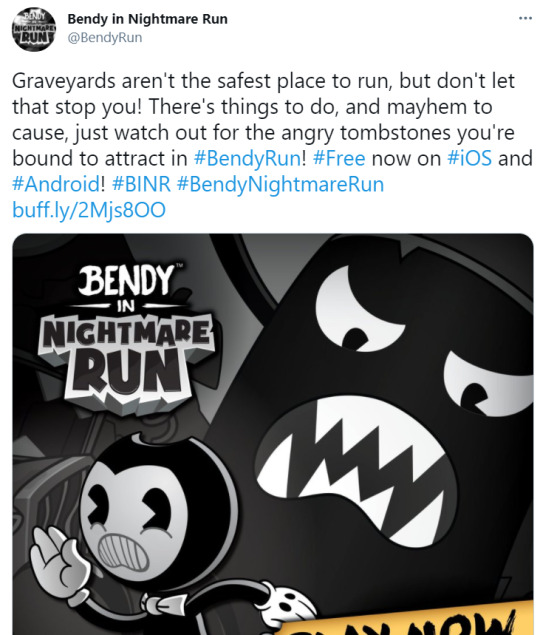
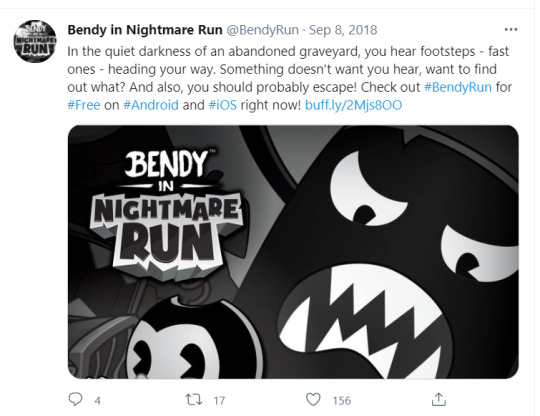
I was looking around for Canoodle’s beef with Bendy (it’s that Bendy trespassed on his property and didn’t leave), and I stumbled upon this from the promotional material for the game. I thought Canoodle’s stage was a junkyard this whole time, you’re telling me it’s a graveyard? Well hang on a moment. The game was released in August of 2018, and both of these tweets are from September of 2018. All the other posts with the bosses for the initial marketing make sense within the context of their stage, but Canoodle’s is inconsistent. Everywhere else, he’s listed as living in a junkyard. So why then, is it called a graveyard here?
So I loaded up the game real quick and played through the first act. Still looks like a junkyard to me. But then THIS happened.
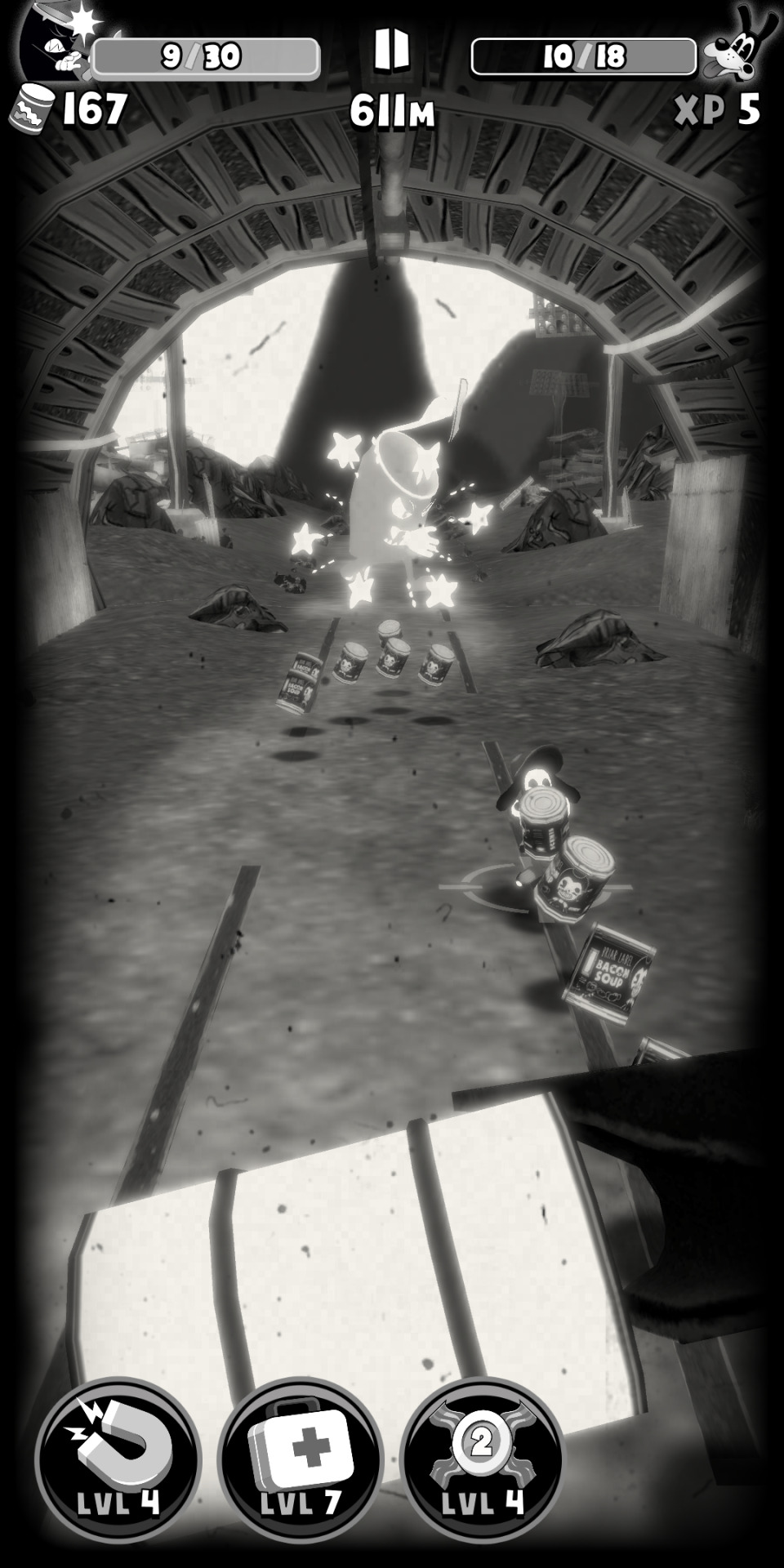
My phone is a bit slow (as is my reaction time) so I couldn’t get a clear screenshot, but the other side of this barrel has a radioactive waste symbol on it. You see where I’m going with this? I predict Canoodle has some kind of link with the content we saw in the Souper Boris comic, it makes too much sense for it to be the same radioactive soup. The promotional material referring to this space as a graveyard could be insight into how Canoodle feels about it. I mean if you were a piece of trash that got thrown away, wouldn’t you feel like the scrapyard was your final resting place? Much like the studio is hell itself for its inhabitants, Canoodle’s “home” is here.
But that leads to the question that I’ve had about Nightmare Run for a while: where in the timeline does it fall? And that’s a really difficult question to answer, because there’s two timelines we need to talk about: the real world of JDS, and the fictional world of the cartoons and comics. And in truth, I don’t have a good answer for it. I think the logical place for it to be is somewhere after the Souper Boris comic, meaning if it’s part of a story told in some kind of Bendy media, it’s gotta be after or alongside the period of 1936-1940.
The thing is, we don’t really know what Nightmare Run IS within this universe, and that’s the bigger question to answer. Sure, here and now in our reality, it’s a mobile game, just as Bendy and the Ink Machine and Boris and the Dark Survival are games, but mobile games didn’t exist back then. There’s also that weird callback to Joey’s whole shtick about “there’s something I need to show you” when you first boot up the game. What is this trying to tell us? What IS Nightmare Run? For us it’s a game, but what is it to the studio employees? What is it to the cartoons? What is it to Joey? There are lots of things we could make of this, but my mind goes to a few places. We could say that it’s just a game that has no bearing on the story. We could say that Joey was ahead of his time, or that maybe Nathan did some development with the JDS property that permeated the modern era. We could say that this was a series of shorts or cartoons where Bendy and friends are having weird dreams.
Or we could turn to what The Illusion of Living tells us about Bendyland and Sillyvision. I haven’t given you all my thoughts on the book yet (I really should, because damn did it rock), but one thing I found fascinating was the look into Bendyland and Joey’s conversations with Bertrum Piedmont. We learn what Joey’s plans were for the park, that each section was meant to represent aspects of each of his core characters. I can absolutely see Nightmare Run fitting in as an attraction for Dark World, Bendy’s area of the park.
Think of it like Disney’s animatronic dark rides, like Mickey and Minnie’s Runaway Railway, or one of the things I miss, Disney Quest. If you’re not familiar with Disney Quest, it was a five floor arcade that lived within Disney Springs (then called Downtown Disney). It’s since been replaced by an ESPN attraction, but when it was still there, it had all kinds of stuff. Early forms of VR (that were nauseating to play with those heavy helmets), lots of old arcade machines, and newer technology that blended virtual and physical gameplay together, like the Pirates of the Caribbean attraction that had you shooting cannonballs at a virtual screen (or Toy Story Midway Mania, if you want a more common comparison).
But this was the 40s, technology for this kind of thing wouldn’t exist, right? And that’s where I turn to Sillyvision, Joey’s special process of editing the inks on the animation cells. Combine that with the advanced technology of harnessing living ink’s properties that Gent had going on, and you have yourself some plausible ways to create an attraction where guests can help Bendy (or be in his shoes) to run from some not-so-friendly faces. It doesn’t sound too far fetched for this universe, and given this man was working on “living cartoons” for the purpose of folks being able to meet them in the park, I wouldn’t put it past him to try this too. It still leaves some questions as to what content Canoodle and friends came from within the universe (were they in a cartoon or comic, or were they made specifically for an attraction?), but one thing is for sure: there’s possibilities. Besides that, we still never got an explanation as to what that hand is in the game.
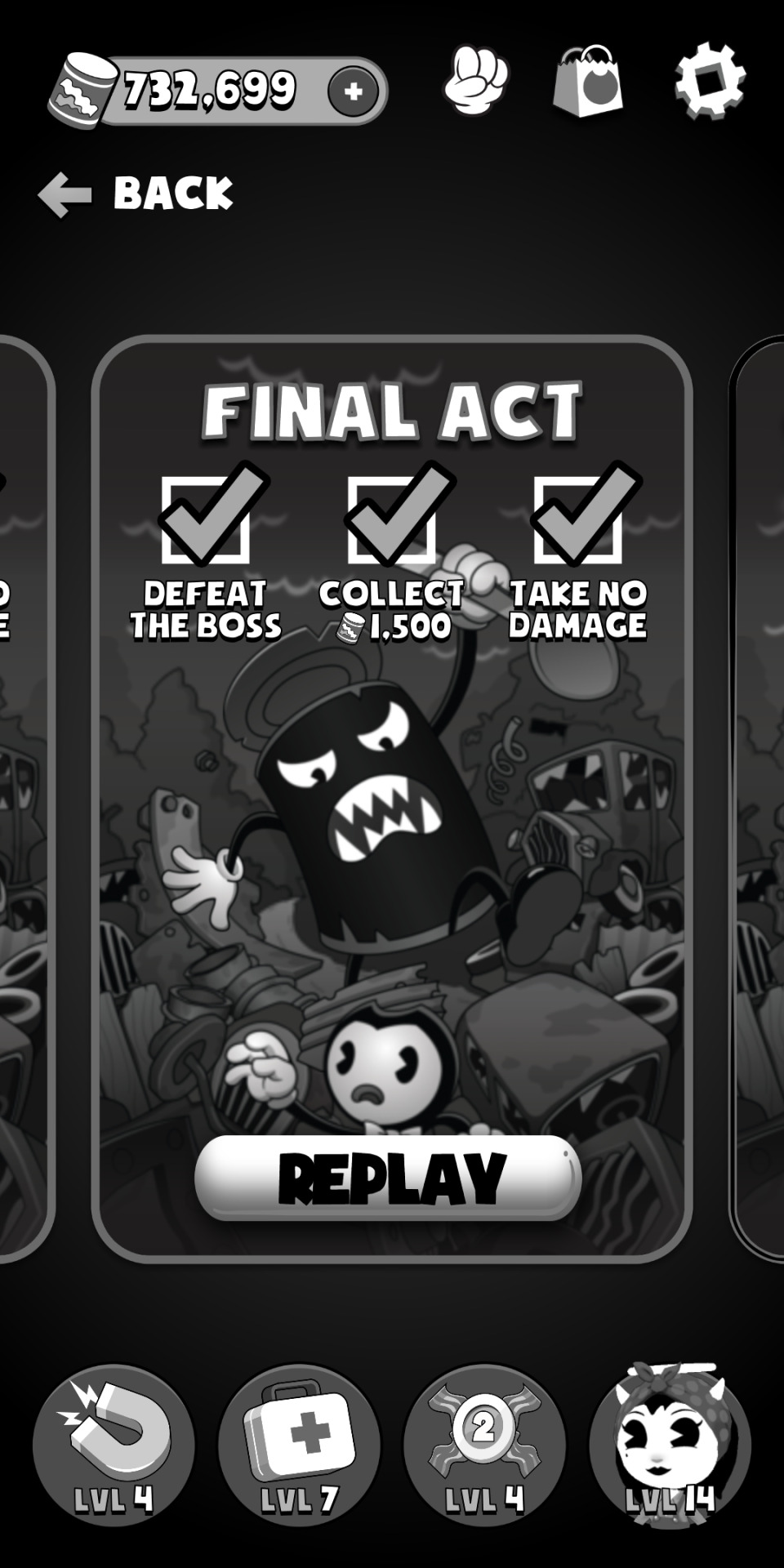
If you tap the hand on the top of the screen there, it opens and closes, but we still have no idea what it does or who it belongs to. It’s 2021, and we still haven’t cracked it! It could be Bendy’s or Boris’ hand (not Alice though, doesn’t have a circle in the palm), or it could be someone else’s. I don’t know. All I know is that I’m probably thinking too hard about this. X’’’D And I’m okay with that. I’d like to revisit Nightmare Run again, I have some thoughts about our enemy characters (Krawl, Stickle, and Gwen), but that’ll be for later. X’’’D I was gonna post cute headcanons about Sammy today and somehow ended up here, what is my life?
#bendy the illusion of living#bendy in nightmare run#bendy crack up comics#bendy crack up comics spoilers#bendy the illusion of living spoilers#tiol#tiol spoilers#the illusion of living spoilers#crack up comics spoilers#bendy theory#batim theory#binr theory#tiol theory#joey drew
18 notes
·
View notes
Text
Game 355: The Devil’s Dungeon (1978)
Since there’s no in-game title, here’s the title from the printed instructions.
The Devil’s Dungeon
United States
Written and published as code by C. William Engel
Versions released for BASIC computers (1978), Atari 800 (1979), Commodore VIC-20 (1983), Apple II (1984), TI-99 (1984), and Commodore 64 (1984)
Date Started: 4 February 2020
Date Ended: 4 February 2020
Total Hours: 1
Difficulty: Very Easy (1/5) in the sense that you can escape and “win” from the opening screen; Hard (4/5) in the sense that it’s hard to stay alive if you choose to keep exploring
Final Rating: (To come later)
Ranking at Time of Posting: (To come later)
This is one of a couple of very brief “clean up” entries that you’re going to see this week, spaced not so far apart as my usual longer entries. The purpose here is to sweep up some 1970s titles that linger on my master list even though I should have gotten to them sooner.
The Devil’s Dungeon has dogged me for a few years, and I occasionally get e-mails about it. I understand why. If it was a 1977 game, as many web sites (including MobyGames) allege, and if it was an RPG and if it was actually sold as a game, it would be perhaps the first commercial RPG. Indeed, my colleague and occasional commenter Keith Smith wrote an article in 2015 questioning whether it was, in fact, the first commercial CRPG. When Smith wrote to me about the question, I dismissed it as such, but after reading his coverage, I realized I was a bit hasty. For various reasons, I am reluctant to call it the first commercial CRPG, but for various reasons it isn’t exactly not, either.
The cover for the Atari 800 version of the program.
The game was a creation (perhaps–see below) of C. William Engel, professor of Mathematics Education at the University of South Florida in Tampa. In 1977, Engel self-published Stimulating Simulations: Ten Unique Programs in BASIC for the Computer Hobbyist. The 64-page book consists of 8 BASIC programs that the reader could type into a TRS-80 or whatever other computer he had that used conventional BASIC. The programs included Art Auction, Gone Fishing, Space Flight, and Business Management. The goal was to teach the reader to program, with a particular focus on statistical simulation and probability.
The Devil’s Dungeon is not one of the original 10 programs, but Engel soon found a commercial publisher for Stimulating Simulations in Hayden Books of New Jersey, and gussied-up versions followed for the Atari 800 in 1979, the Commodore VIC-20 in 1983, and the Apple II, TI-99, and Commodore 64 in 1984. The Devil’s Dungeon appears in all of these editions. Whether the game counts as the earliest RPGs thus depends first on whether we count type-it-yourself code as actual software.
Gameplay consists of moving from room to room.
Then we have the date. Evidence from ads shows that Engel was selling The Devil’s Dungeon as a 15-page standalone publication as early as February 1978. I have yet to find a copy of this book, but enough web sites, including Google Books, give the specific date of 10 January 1978 that I suspect that’s what appeared on the original publication itself. The 1977 date given by many web sites is a confusion based on the copyright date in several editions of Stimulating Simulations, which list both the original copyright (1977, with no Devil’s Dungeon) and the publication dates of those specific editions (1979-1984). So while the game was not published in 1977–which would have put it in stores a full year before any other candidate–it was published so early in 1978 that it’s hard to imagine any of the other candidates beats it.
A February 1978 ad for the pre-Hayden Books version of Stimulating Simulations. Note that The Devil’s Dungeon is “also available” at the bottom.
Third, there’s the question of whether the game is even an RPG. If you wonder whether something printed on a few pages for a reader to type could possibly be much of a game, your skepticism is well-founded. The game reminds me in a weird way of Andrew Greenberg’s Star Saga (1988), where most of the “game” was in the printed book and the computer was simply used for the probabilities and calculations. Here, you need the book for the backstory and instructions. The computer program just keeps track of your strength, speed, experience, and gold. So it does have attributes. And those attributes do increase with experience and they are used to determine success in combat. And you do have a single piece of “equipment” that you can you use when you want. It’s like someone looked at my requirements and made a game that technically meets them . . . but come on.
“Character development” consists of buying speed and strength with experience.
The backstory is simply that there’s a lot of gold hidden in a “maze of caves” in an active volcano. Monsters and demons also roam the halls. When you start the game, you have 100 speed, 100 strength, and no gold. The game creates randomized dungeon levels of 16 rooms each, and you spend the game navigating from room to room by pressing the number of the room you want to go to. A room may have a random amount of gold, a monster (unnamed) with a random amount of speed and strength. It may also have demons or poison gas, neither of which can be conquered and instead must be quickly fled. Tremors occasionally re-arrange the dungeon levels while you’re in mid-exploration.
The only “equipment” is a “magic wand” that the player carries and can activate by hitting 99 in any room. The wand destroys monsters and creates a dropoff to lower levels 60% of the time; it backfires and halves your strength and speed 40% of the time.
Room #1 on each level is a “special room,” where you can trade your accumulated experience for an equivalent boost to your speed or strength. You can also leave the dungeon from the room, at which point the game gives you your gold total and dumps you out of the program.
“Winning” The Devil’s Dungeon.
Commands are simply 0 to fight (if the room has a monster), 1-9 to move between rooms, negative numbers to go down an equivalent number of levels (if the room has a dropoff), 88 to see what rooms you’ve already visited, and 99 to activate the wand or leave the dungeon, depending on what room you’re in. This is one of those few cases where a couple of screenshots tells you all you need to know about the game.
Engel wasn’t trying to entertain with this game; he was trying to teach. His books weren’t just a bunch of code: they contained tables of variables, flow charts, diagrams, and other tools meant to explain how the program works. At the end of each program, he also listed some ideas for both minor and major modifications and upgrades to the base program–challenges for the more advanced coder. For The Devil’s Dungeon, he suggested that a more complicated game would include the purchase of weapons and equipment before starting, named monsters, a variable number of rooms per level, light and dark rooms, and pit traps that dump the player to lower levels.
These suggestions are not coincidentally among the many featured in Caverns of Mordia, a 1980 Australian game for the Apple II that is a “grown up” version of The Devil’s Dungeon. I covered it about a year ago. That Mordia uses Dungeon as a base is 100% clear from the nature of exploration: infinite dungeon levels of up to 16 rooms, Room #1 is a “special room,” you have two attributes (strength and agility in Mordia) and can trade experience for them, there are gas and demons, the wand works the same way, and so forth. But Mordia adds about 200% to the content of the game, including some crude graphics (animated in a couple scenes!), equipment, named monsters, more special encounters, and a main quest.
Caverns of Mordia started with a Devil’s Dungeon base but offered a more complete RPG experience.
Mordia is so clearly an expanded version of The Devil’s Dungeon that I find it hard to give credence to author Hans Coster’s insistence (in an e-mail to me) that he wrote it from scratch. He says he gave early version of the game away for free before ultimately selling Mordia, but it’s hard to imagine one of those disks making it from Australia to Florida two years ahead of Mordia‘s release, and Dr. Engel then not only plagiarizing the code but dumbing it down at the same time. (Dr. Engel died in 2011, so we can’t ask him.) Mordia makes so much more sense as an additive experience to Dungeon than Dungeon does as a reductive experience of Mordia. It’s easier to believe that Dr. Coster simply doesn’t remember, 40 years later, that he started with The Devil’s Dungeon as a nucleus, particularly when he would have had to add so much to the code. It is a full game where Dungeon isn’t, and if it had been published in 1978, I wouldn’t hesitate to call it the first commercial RPG.
If I had to GIMLET The Devil’s Dungeon, it would earn a 6, tied for the lowest score ever, probably the lowest score possible. I can’t bring myself to give it any points for the game world, encounters, or equipment; even though it technically has them, they’re not fleshed out enough to even make it to “1.” I did give a 1 for character creation and development, combat, economy, quest, graphics and sound, and gameplay.
In the end, while I’m reluctantly forced to admit that it was “sold” before any other RPG we can identify and it does meet my three RPG criteria, it’s still tough to give it the award of “first commercial CRPG,” particularly when this is one of the few cases where even I would have had the skill to create a BASIC game this primitive. While I try to think of a good way out of it, check out my colleague Nathan’s take on the game at “CRPG Adventures,” where he found an amusing way to cheat. Maybe ignore his last sentence before the rating.
source http://reposts.ciathyza.com/game-355-the-devils-dungeon-1978/
0 notes